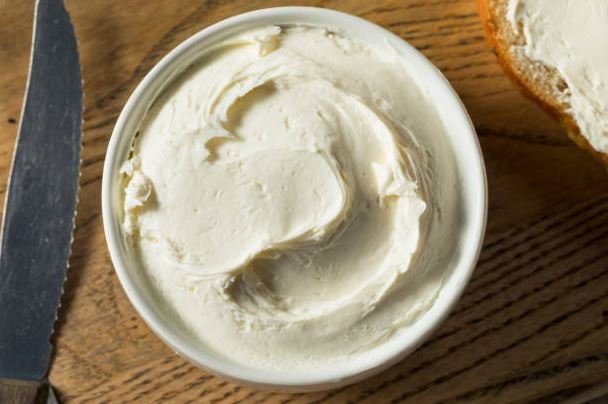Cream cheese is highly valued due to its soft consistency. It can be used in many combinations, including regular, whipped, reduced-fat, and flavored types. But it can be tricky to keep it fresh after it is opened. So how long does cream cheese last after opening?
If the cream cheese is unopened, it can last for a few weeks beyond the expiration date printed on the package if stored properly in the refrigerator. However, if it is opened, the cream cheese will last for a shorter time. Opened cream cheese lasts for about ten days.
If you have cream cheese that has been opened, and you want to preserve it for longer, read on to learn some tips on how to do so.
Does Cream Cheese Go Bad After Opening?
Yes, your delicious cream cheese can go bad after opening if it is not handled properly. Cream cheese will generally stay at its best quality for about 10 to 14 days after the ‘sell by’ date on the package. The ‘sell by’ date on the package is not an expiration date. It is just the last date stores are supposed to display the item.
Although cream cheese has a short shelf life, how long it lasts depends on factors such as the type of product, how it was stored, the temperature at which it was stored, the amount of time since opening, and the type of packaging used to store it.
Generally, cream cheese can last up to two weeks after opening if stored properly in the refrigerator and two months if stored in the freezer (although freezing is not commonly recommended because it changes the texture of the cream cheese).
To maximize the shelf life of cream cheese, ensure to keep the original packaging intact when storing it in the refrigerator. It should also be stored at temperatures below 40°F. It should be consumed at room temperature within four days of opening. This is because, at room temperature, bacteria can grow on the cream cheese surface, causing it to go bad much faster.
How Long Does Cream Cheese Last In The Fridge After Opening?
Cream cheese will last for about ten days in the fridge after opening. However, it may still be safe to eat for up to 2 weeks after opening as long as it has been stored in a well-sealed container in the refrigerator and has not developed any mold or unusual odor.
Here are some guidelines you can follow when purchasing your cream cheese and storing it in the fridge:
- When purchasing, make sure to check the date stamped on the package and buy the furthest out.
- Store it in an airtight container (or resealable bag) in the refrigerator. This will help ensure that it stays fresh and safe to eat for up to two weeks after opening.
- Always store your cream cheese away from the fridge door, as the door compartments are normally warmer than the main storage area.
- Check consistently for changes in flavor and texture. Note that while cream cheese can last up to two weeks after opening, its flavor and texture may begin to change over time. Cream cheese may become dry or lumpy as it ages, so if you notice any changes in texture or flavor, discard the product immediately.
- When ready, thaw in the refrigerator overnight and use within one week of thawing.
- Always keep your cream cheese away from moisture to protect it from mold growth.
- Don’t leave cream cheese open at room temperature for over two hours.
- Pasteurization is key to making sure your cream cheese stays fresh.
How Can I Preserve Cream Cheese For Longer After Opening?
Here are some guidelines you can follow to store your cream cheese for longer after you have opened it:
1. Store cream cheese at the correct temperature. Cream cheese should always be stored in the refrigerator, as it needs to remain at a temperature of 40 °F or below to avoid spoilage.
2. Keep cream cheese covered. Always store cream cheese in an airtight container or wrap it in plastic or aluminum foil after opening to prevent contamination and dryness.
3. Don’t freeze it. Freezing cream cheese can cause it to become grainy and lose its texture, so it’s best not to freeze it unless you want to use it for baking purposes only.
4. Check for signs of spoilage. If your cream cheese has an unusual odor, color (a yellow pigmentation as opposed to its normal cream or white color), and a dry or slimy texture, it’s best to throw it away and buy a new batch.
So, here’s how you can preserve your cream cheese for longer after opening;
- Transfer to an airtight container.
- Keep the foil or plastic wrap over it.
- Store the cream cheese in the fridge and keep its temperature constant: If it becomes too cold or too warm, it will be harder to spread and runny when you open it up again.
- When taking out your cream cheese, only take out what you need, and return the rest to the fridge immediately: If you leave some of your cream cheese out at room temperature while it’s still good, bacteria can grow on top of it.
- Do not mix other flavors with your cream cheese.
- You can also preserve your cream cheese by adding water before putting it in the freezer.

Cream Cheese Recipe
Equipment
- Large pot
- Thermometer
- Cheesecloth
- Colander
- Mixing bowl
- Hand mixer or stand mixer
Ingredients
- 4 cups of milk
- 2 cups of heavy cream
- 1/4 teaspoon of salt
- 1/4 cup of fresh lemon juice or white vinegar
Instructions
- In a large pot, combine the milk and cream and heat it over medium heat. Use a thermometer to monitor the temperature, and heat it until it reaches 175°F.
- Once the milk and cream reach 175°F, remove the pot from the heat and add the salt and lemon juice or vinegar. Stir the mixture gently to combine.
- After adding the acid, let the mixture sit for 5-10 minutes. During this time, the acid will cause the milk proteins to coagulate and form curds.
- After the curdling process is complete, place a colander lined with cheesecloth over a mixing bowl. Carefully pour the mixture into the colander, allowing the whey (the liquid portion of the mixture) to drain into the bowl.
- Let the cheese drain for at least 6 hours, or overnight, in the refrigerator. The longer the cheese drains, the firmer it will become.
- Once the cheese has drained, transfer it to a mixing bowl and use a hand mixer or stand mixer to beat it until it's smooth and creamy.
- Transfer the cream cheese to an airtight container and store it in the refrigerator for up to two weeks.
Video
Notes
- Use high-quality ingredients: The quality of the milk and cream you use will impact the flavor and texture of the cream cheese, so opt for the best quality you can find.
- Use fresh lemon juice or vinegar: The acid you use to curdle the milk should be fresh and acidic. Lemon juice or white vinegar are both good options.
- Don’t overmix the cheese: Overmixing the cream cheese can cause it to become too thin and runny, so be careful not to overdo it with the mixer.
- Experiment with flavors: Cream cheese is a versatile ingredient that can be flavored with a variety of herbs, spices, and other ingredients. Try adding garlic, chives, or honey to create a unique and delicious spread.
Conclusion
Like all perishable foods, cream cheese has a limited shelf life. Knowing how long you can keep cream cheese after opening can help you get the most out of your purchases and maximize its storage life. With this knowledge, you can enjoy cream cheese for as long as possible.


















